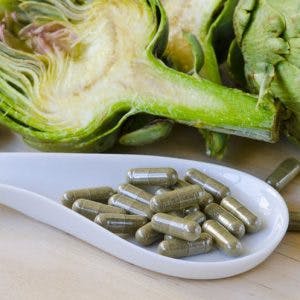Stroke is the 5th leading cause of death in the US and a leading cause of long-term disability. Fortunately, many strokes can be prevented when the right steps are taken. To do this, it’s essential to understand what causes a stroke, what risk factors increase your chances of having a stroke, and what steps you can take for prevention. Knowing this information motivates you to keep your brain healthy and potentially save a life.
To help you understand the various factors associated with stroke, this article will discuss:
What Causes a Stroke?
A stroke is a neurologic injury caused by a disruption of the flow of blood to the brain. This happens when an artery to the brain bursts or clots. These two types of strokes are called ischemic or hemorrhagic.
Ischemic strokes, which are the most common type of stroke, occur when a blood clot or plaque deposits clog an artery in the brain, stopping blood from perfusing the associated brain area(s). In contrast, hemorrhagic strokes refer to strokes caused by the rupturing of an artery and the subsequent bleeding within the brain. This bleeding creates excess pressure in the affected brain area, resulting in the brain being compressed.
A stroke can be a life-threatening condition as brain cells cannot properly function without oxygen-rich blood. Swift medical treatment is necessary to restore the normal flow of blood within the brain; otherwise, brain cells continue to die. In addition, sometimes swift medical interventions can reverse the impact of a stroke.
Under the right circumstances, ischemic strokes can be treated with clot-dissolving drugs like tPA (tissue plasminogen activator). Hemorrhagic strokes often require surgery to repair the ruptured artery and relieve swelling within the skull. To minimize brain damage, it is essential to quickly restore blood flow to the affected area of the brain.
Before any stroke intervention, neurons (brain cells) are dying from the lack of oxygen-rich blood supply. Fortunately, the brain is capable of healing through neuroplasticity. The rehabilitation process is designed to facilitate this healing in the brain and restore as much function as possible.
Now that you understand what causes a stroke let’s discuss the early warning signs of stroke and when to seek help.
Warning Signs of a Stroke
The most effective way to minimize brain damage caused by a stroke is to identify a stroke in its earliest stage and seek emergency medical attention as soon as possible. This can help prevent the stroke from progressing and potentially save a life. This is because there is emergency stroke medication (tissue Plasminogen Activator) that can be administered within the first few hours of stroke onset, which can reverse the effects of the stroke.
When someone is having a stroke, they often experience these early warning signs:
- Facial drooping in half of the face
- Weakness in one arm and/or leg
- Slurred or disrupted speech
- Splitting headache
- Vertigo
- Dizziness
- Sudden vision problems
Strokes are often associated with individuals of older age. However, this has created a bias such that a stroke in a young person can go undetected or even misdiagnosed. If you are concerned that a loved one is experiencing a stroke, it is wise to seek medical attention immediately.
If you experience or witness someone experiencing any warning signs of a stroke, it’s important to call 9-1-1 immediately! Waiting may disqualify a person from receiving medications like tPA, resulting in greater potential for brain damage.
Leading Causes of Stroke
Stroke prevention starts with awareness. You should first understand what the major risk factors for stroke are so that you can take action if any apply to you. By managing risk factors early on, you can reduce your chances of having a stroke.
Many chronic health conditions increase one’s risk of having a stroke. Listed below are the 5 leading causes of stroke.
If you have any of these stroke risk factors, make sure that you are managing them well. Have a conversation with your doctor about the best management strategies for you.
1. Hypertension (High Blood Pressure)
Hypertension is a leading cause of stroke because it places extra strain on the walls of the arteries. When there is too much pressure on the arterial walls, there is an increased risk of rupture, which can cause a hemorrhagic stroke.
Additionally, high blood pressure over time leads to damaged arterial walls, which may contribute to blockages that can cause an ischemic stroke.
Based on data from 30 studies, the analysis showed that about 64% of stroke patients had hypertension. Maintaining blood pressure at normal levels will decrease strain on the cardiovascular system and significantly reduce the risk of stroke.
2. High Cholesterol
Having high cholesterol is also a major stroke risk factor. Your body needs a certain amount of cholesterol to produce vital substances like hormones and vitamin D. Only a limited amount of cholesterol is obtained from foods, as the liver already produces 80% of the cholesterol the body needs.
Regularly eating certain cholesterol-rich foods can result in elevated cholesterol levels. It is important to differentiate between the two types of cholesterols you can eat, as they have opposite effects on your cardiovascular system.
LDL cholesterol, or “bad” cholesterol, is found in many foods, including fatty meat products. Consuming LDL cholesterol results in fatty deposits called plaques building up in the arteries, making the arteries narrower and more prone to blood clots. This increases the risk of a stroke.
The “good” HDL cholesterols can carry some of the bad cholesterol back to the liver, limiting the effects of bad cholesterol. HDL cholesterol is found in foods such as nuts, fish, and olive oil. Focusing on limiting your consumption of bad cholesterol and increasing your intake of foods with good cholesterol can limit your risk of having a stroke.
3. Diabetes
Individuals with diabetes are 1.5 times more likely to have a stroke than individuals without diabetes.
Diabetes is a metabolic disorder characterized by high blood sugar (blood glucose) caused by insulin resistance or insufficient insulin. High blood glucose levels can contribute to the buildup of fatty deposits inside the arteries. This can cause damage to the nerves and blood vessels, which can lead to heart disease and stroke.
4. Obesity
Obesity is a well-established risk factor for ischemic stroke that is characterized by having a Body Mass Index (BMI) greater than 30. It is suggested that for each unit increase in BMI, the risk of having a stroke is increased by 6%.
Additionally, the amount of body fat specifically around the waist is proven to be a better predictor of stroke risk than BMI alone. The fat located around the waist is called visceral adipose tissue and too much of it is linked to insulin resistance, high cholesterol, and hypertension, all of which are major risk factors for stroke. Losing weight and diets high in fiber will help reduce your visceral adipose tissue.
5. Smoking
Smoking narrows the arteries, thickens the blood, and increases the risk of blood clots in the arteries. Each of these factors is a stroke risk within itself, so it’s no surprise that smoking doubles your risk of having a stroke.
Quit smoking, and you will thin your blood and widen your arteries throughout your body, which is key to preventing stroke and living a healthy life.
Management Tips for the Leading Causes of Stroke
Oftentimes, strokes can be prevented by making healthy lifestyle adjustments and managing preexisting health conditions.
Here are some of the most effective tips for stroke prevention:
- Take the medications your doctor prescribes for high cholesterol and/or high blood pressure
- Reduce sodium intake if you have high blood pressure
- Regularly monitor blood pressure by using a blood pressure monitor at home
- Reduce dietary “bad” cholesterol if your blood cholesterol is high
- Increase consumption of “good” cholesterol by eating nuts, legumes, olive oil, and fish
- Increase physical activity levels. One of our most powerful tips.
- Follow a healthy diet and practice portion control if your doctor recommends you lose weight
- Incorporate aerobic exercise into your routine so that you are raising your heart rate when you exercise.
- Quit smoking as smoking directly impacts your health in a variety of ways
- Limit alcohol consumption
While many stroke risk factors can be managed naturally without pharmaceutical intervention, more severe conditions may require additional support. Talk to your doctor about medications such as statins, anticoagulants, and drugs to reduce hypertension, high cholesterol, and diabetes.
Understanding What Causes a Stroke: Key Points
Strokes are caused by a blocked or ruptured artery in the brain. Disrupted blood flow leads to brain tissue death, resulting in permanent brain damage.
To minimize damage, it’s essential to know the early warning signs of a stroke and seek medical attention immediately. Additionally, focusing on making healthy lifestyle choices can significantly reduce the risk of having a stroke.
We hope this article helped you understand what causes a stroke and the best ways to minimize your chances of experiencing one.










